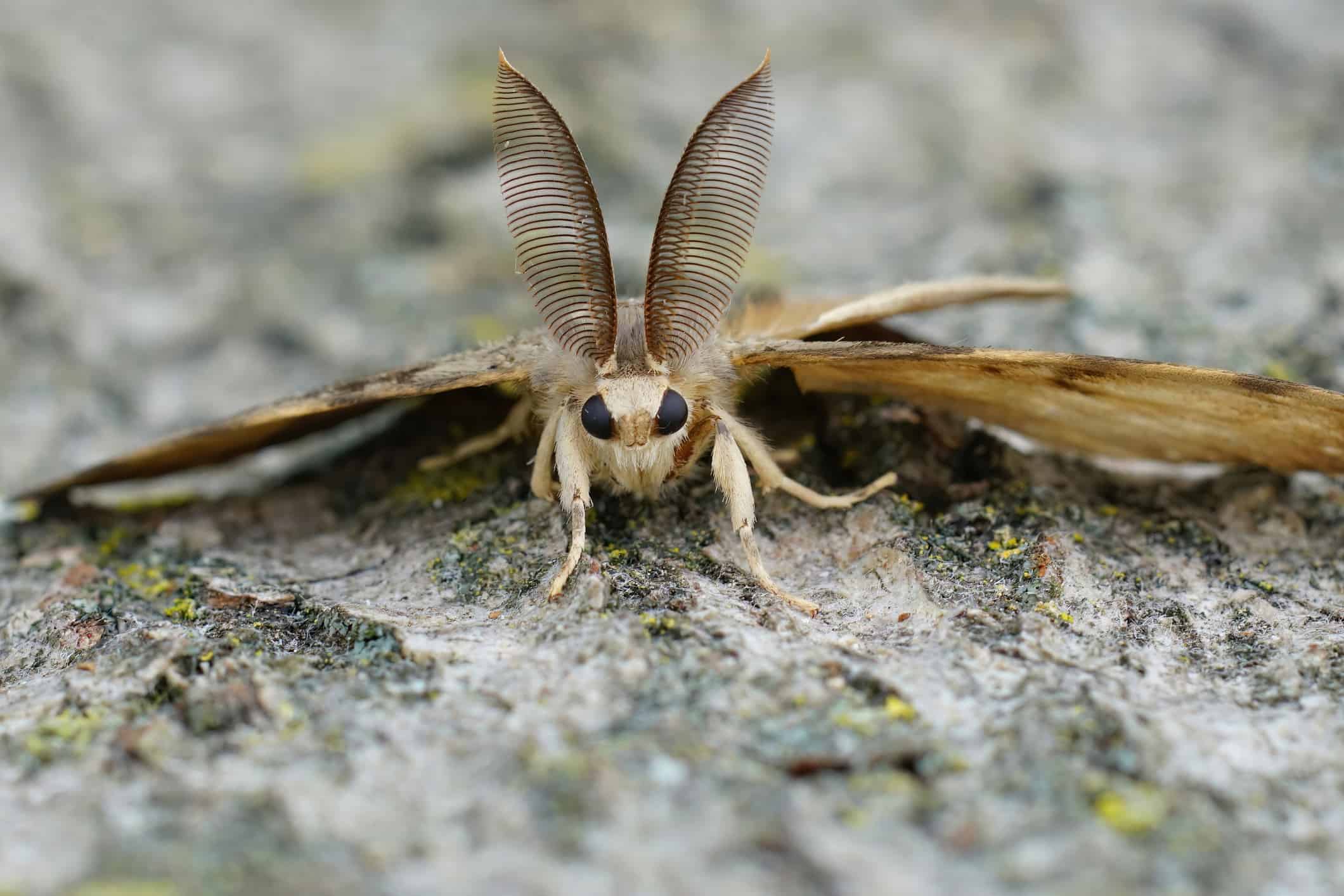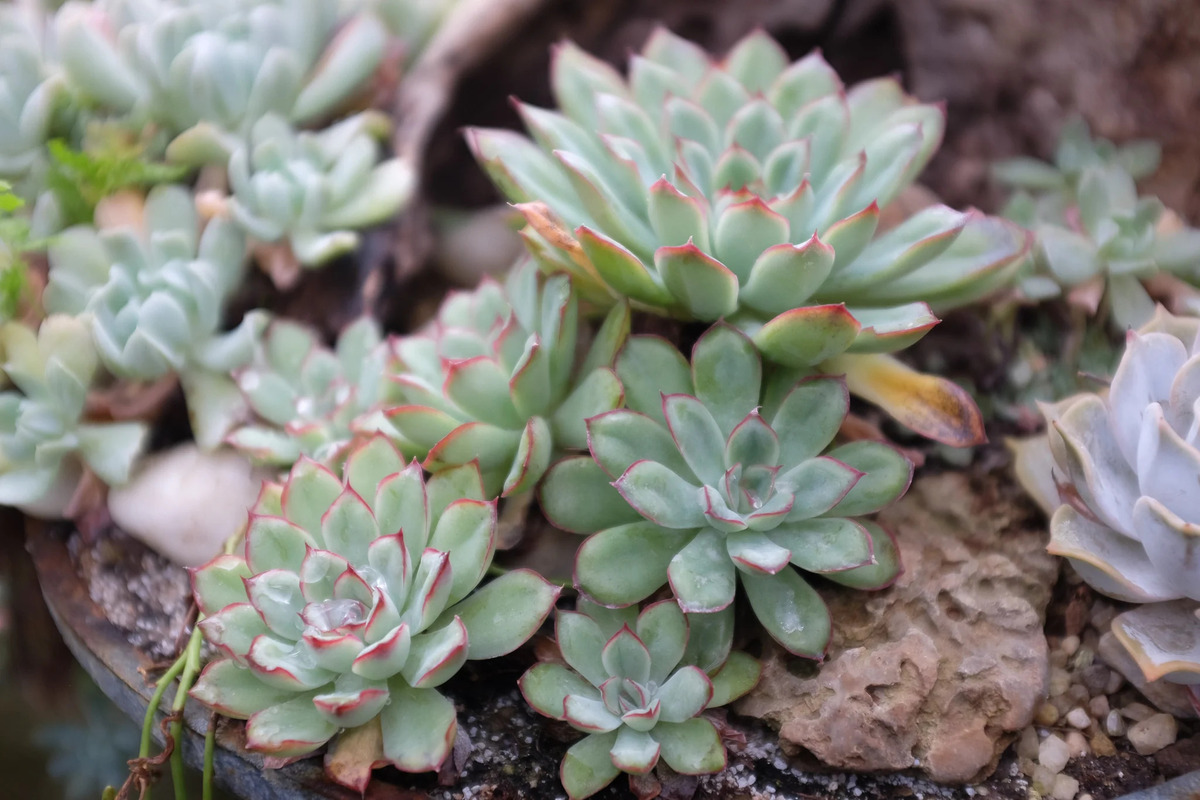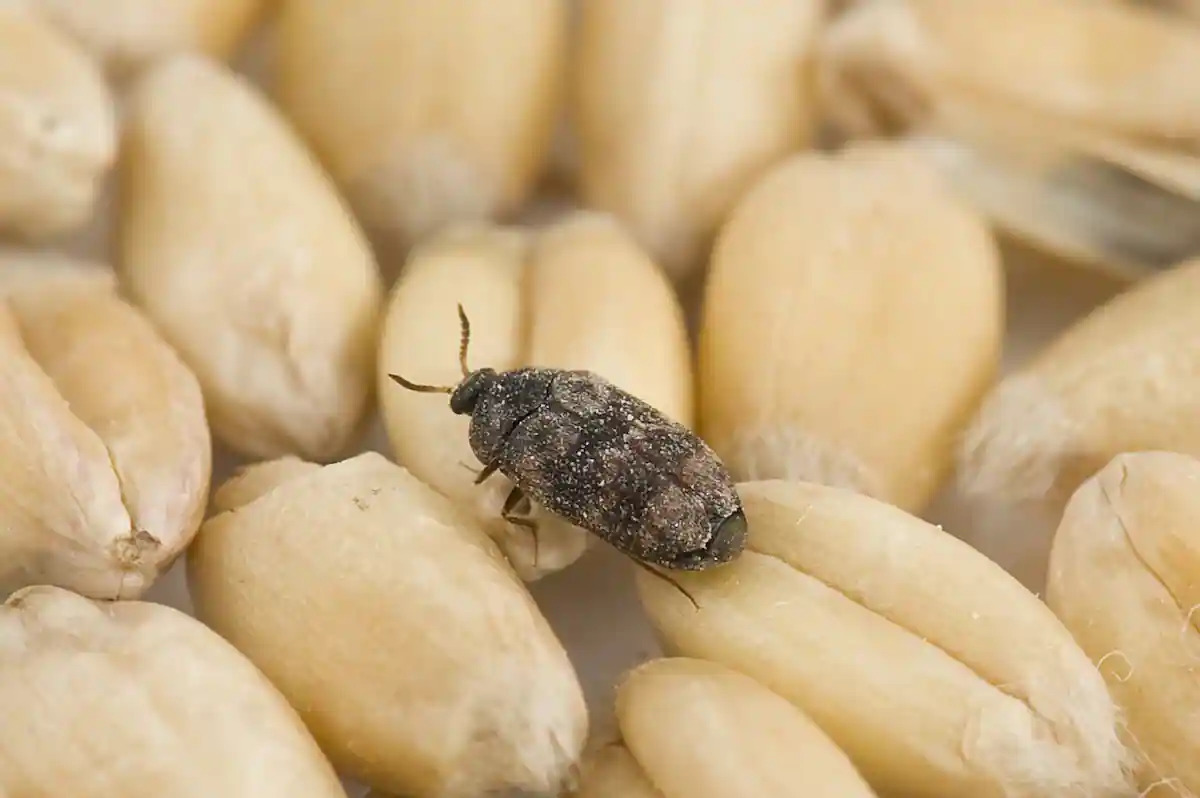Home>Gardening Tips and Tricks>Problem Solving>How To Protect Clothes From Insects


Problem Solving
How To Protect Clothes From Insects
Modified: January 22, 2024
Discover effective solutions for protecting your clothes from insects with our comprehensive guide on problem solving.
(Many of the links in this article redirect to a specific reviewed product. Your purchase of these products through affiliate links helps to generate commission for Chicagolandgardening.com, at no extra cost. Learn more)
Table of Contents
- Introduction
- Understanding the Threat of Insects to Clothes
- Common Clothes-Damaging Insects to Look Out For
- Signs of Insect Infestation in Clothes
- Precautionary Measures to Protect Clothes from Insects
- Natural Ways to Repel Insects from Clothes
- Using Insect-Repellent Products on Clothes
- Proper Storage Techniques for Clothes to Prevent Insect Infestation
- Cleaning and Treating Clothes to Eliminate Insects
- Conclusion
Introduction
Welcome to our comprehensive guide on how to protect clothes from insects. We all love our clothing, whether it’s a cozy sweater, a favorite pair of jeans, or a formal dress. However, our precious garments can often fall victim to the destructive habits of insects. From moths to beetles, these tiny pests can wreak havoc on our wardrobes, causing irreparable damage to fabrics and leaving us frustrated and disappointed.
But fear not! In this article, we will provide you with valuable knowledge and practical tips on how to safeguard your clothes from these menacing insects. By understanding the threat they pose, recognizing the signs of infestation, and employing preventive and remedial measures, you can protect your cherished garments and keep them in excellent condition for years to come.
Whether you’re dealing with a minor infestation or taking proactive steps to prevent one, our expert advice and tried-and-true methods will help you outsmart these troublesome critters. We’ll cover natural repellents, insect-repellent products, proper storage techniques, and cleaning and treating methods to eliminate insects effectively from your clothes.
So, if you’re ready to bid farewell to moth holes, beetle larvae, and the other perils insects can bring to your clothing, let’s dive right in and discover the techniques to safeguard your wardrobe. Embrace the insights ahead and take control of your clothes’ destiny. Let’s protect your fashion investments and keep your garments bug-free!
Understanding the Threat of Insects to Clothes
Before we delve into the methods of protecting our clothes from pesky insects, it’s crucial to understand the threat they pose and the damage they can cause. Insects such as moths, beetles, silverfish, and carpet beetles all have a voracious appetite for fabrics, making our clothes their irresistible feast.
Clothes moths, for instance, are the most common culprits when it comes to clothing damage. The adult moths aren’t the ones that cause the harm; it’s their larvae. These tiny caterpillar-like creatures feed on natural fibers like wool, silk, and cashmere. They tend to thrive in dark, undisturbed areas, such as closets, drawers, and corners.
Beetles, on the other hand, are attracted to a wider range of fabrics, including cotton, linen, and synthetic materials. They can tunnel through the fabric, leaving behind unsightly holes and damage that is often irreversible.
Aside from the obvious destruction to the fabric itself, insect infestation can also lead to costly repairs or replacements of cherished garments. Moreover, the presence of insects can trigger allergies and even cause health issues for individuals sensitive to insect allergens.
Now that we understand the potential consequences of insect infestation, let’s move on to the next section to learn more about the specific insects we should be on the lookout for.
Common Clothes-Damaging Insects to Look Out For
When it comes to protecting our clothes from insects, knowledge is power. By familiarizing ourselves with the common clothes-damaging insects, we can better identify the signs of infestation and take appropriate action promptly. Here are some insects that pose a threat to our beloved garments:
- Clothes Moths: Clothes moths are notorious for causing damage to wool, silk, and cashmere clothing items. The larvae of these moths feed on natural fibers, leaving behind irregularly shaped holes.
- Carpet Beetles: Carpet beetles are versatile pests that can damage a wide range of fabrics, including wool, silk, cotton, and synthetic materials. They are often attracted to stored clothing and can leave behind holes, shed skins, and fecal pellets.
- Silverfish: While not exclusive to clothing, silverfish can infest your wardrobe and feast on various fabrics. These wingless insects are attracted to starches and proteins found in clothing items, leaving behind small, irregularly shaped holes.
- Webbing Clothes Moths: Webbing clothes moths are closely related to clothes moths and share similar destructive tendencies. They create silk webs within the fabric, making it difficult to spot the larvae. Look out for these silky webs and holes as signs of infestation.
- Case-Making Clothes Moths: Case-making clothes moths are small, 6-7mm long insects that can cause significant damage to clothing. The larvae of these moths create portable cases out of the fabric they eat, using them as protective shelters while they feed.
It’s important to note that prevention is key when dealing with these clothes-damaging insects. Regular inspection of your clothes, especially those made of natural fibers, can help you detect early signs of infestation and take appropriate measures to protect your garments. In the next section, we’ll discuss the telltale signs of insect infestation in clothes, so stay tuned!
Signs of Insect Infestation in Clothes
Recognizing the signs of insect infestation in clothes is crucial for early detection and effective intervention. By staying vigilant and regularly inspecting your garments, you can take prompt action to prevent further damage. Here are some common signs to look out for:
- Holes: Irregularly shaped holes in clothing items, especially in natural fibers like wool, silk, and cashmere, are a clear indication of clothes moth or carpet beetle larvae feeding on the fabric.
- Shed Skins: Insect larvae go through a molting process, shedding their skins as they grow. If you find tiny, translucent skins scattered in your wardrobe, it’s a sign of an active infestation.
- Fecal Pellets: Insects leave behind small, pellet-like droppings called fecal pellets. These can appear as small dark specks on your clothes, indicating the presence of pests.
- Webbing: Webbing clothes moths create silk webs within the fabric they infest. If you notice silky webs, particularly in hidden or undisturbed areas of your clothing, it’s a sign of webbing clothes moths.
- Live or Dead Insects: Spotting live insects or their dead bodies in your wardrobe is a clear sign of an infestation. Keep an eye out for tiny moths or beetles crawling or flying around your clothes.
It’s important to note that some infestations may be limited to a specific area or garment, while others can spread rapidly to other items. If you notice any of these signs, it’s crucial to take immediate action to prevent further damage. Inspect your entire wardrobe and consider professional pest control measures if the infestation is severe.
Now that we’ve covered the signs of insect infestation, it’s time to move on to the next section, where we’ll discuss precautionary measures to protect your clothes from these pesky pests.
Precautionary Measures to Protect Clothes from Insects
When it comes to protecting your clothes from insects, prevention is key. By implementing a few precautionary measures, you can create a hostile environment for these pests and preserve the integrity of your garments. Here are some effective steps to take:
- Regular Cleaning: Regularly launder your clothes before storing them. Insects are attracted to food stains, body oils, and other organic residues on fabric. Be sure to follow the care instructions on each garment to prevent any damage during the cleaning process.
- Proper Storage: Store your clothes in sealed containers or garment bags to minimize the insects’ access. Ensure the containers or bags are clean and free from any traces of insects or larvae. Avoid using cardboard boxes or plastic bags, as they can be easily penetrated by pests.
- Vacuum and Dust: Regularly vacuum and dust your closets and drawers to eliminate any potential hiding places for insects. Pay close attention to corners, seams, and crevices where they may hide and lay eggs.
- Cedar Products: Cedar is a natural insect repellent. Consider using cedar balls or cedar blocks in your storage areas to deter clothes moths and beetles. Make sure to periodically sand the cedar products to keep their scent fresh and effective.
- Temperature and Humidity Control: Insects thrive in warm and humid environments. Keep your storage areas cool and dry by using dehumidifiers or silica gel packets. Maintaining a temperature below 70 degrees Fahrenheit and humidity below 50% can help deter insect activity.
- Regular Inspection: Periodically inspect your stored clothes for any signs of infestation. Check for holes, shed skins, fecal pellets, or live insects. Early detection can help prevent the infestation from spreading and causing further damage.
- Rotate Wearable Items: Rotate and wear your clothes regularly. Insects are less likely to infest frequently worn garments. By giving your clothes regular wear, you disturb the undisturbed environment that insects seek.
By implementing these precautionary measures, you significantly reduce the risk of insect infestation in your clothes. However, if you do encounter an infestation, don’t panic. In the next sections, we will explore natural ways to repel insects from clothes and the use of insect-repellent products to combat these pests effectively.
Natural Ways to Repel Insects from Clothes
If you prefer to take a natural approach to repelling insects from your clothes, there are several effective methods you can try. These natural remedies are safe for both you and your garments. Here are some popular natural ways to repel insects:
- Lavender: The strong scent of lavender acts as a natural insect deterrent. Place sachets filled with dried lavender flowers or lavender essential oil-infused cotton balls in your drawers or closets. Not only will it repel insects, but it will also leave your clothes with a pleasant aroma.
- Cedar: As mentioned earlier, cedar is a natural insect repellent. Use cedar blocks, chips, or cedar balls in your storage areas to repel clothes moths and beetles. Replace or refresh them periodically to ensure their effectiveness.
- Mint Leaves: Mint leaves have a strong scent that insects dislike. Place dried mint leaves or cotton balls soaked in peppermint essential oil in your clothing storage areas to repel moths and other pests.
- Citrus Peels: Insects are repelled by the scent of citrus fruits. Save your citrus peels, such as orange or lemon peels, and place them inside sachets or directly in your storage containers. Replace the peels regularly to maintain their effectiveness.
- Cloves: Cloves have a powerful aroma that repels insects. Place a few whole cloves in muslin bags or sachets and hang them or tuck them into your clothing storage areas. The smell of cloves will help keep the pests away.
- Herb Sachets: Create sachets using a combination of herbs like rosemary, thyme, and bay leaves. These herbs have strong scents that insects find unappealing. Place the sachets in your drawers or storage containers to deter pests.
Remember to refresh or replace these natural repellents regularly to maintain their potency. While these methods can help repel insects, they may not eliminate an existing infestation. If you discover signs of infestation, it’s crucial to take immediate action to prevent further damage.
Now that you have learned about natural ways to repel insects from your clothes, let’s explore the use of insect-repellent products to combat these pesky pests effectively.
Using Insect-Repellent Products on Clothes
If you’re looking for a more potent solution to protect your clothes from insects, using insect-repellent products can be a viable option. These specially formulated products contain chemicals that deter insects from coming near your garments. Here are some commonly used insect-repellent products and how to use them effectively:
- Insect-Repellent Sprays: Insect-repellent sprays are designed to create a protective barrier on your clothes. Look for sprays that specifically mention fabric-friendly formulas. Before using, make sure your clothes are clean and dry. Hang them up in a well-ventilated area and spray the repellent evenly, covering the entire garment. Allow the spray to dry completely before storing or wearing the treated clothes.
- Insect-Repellent Sachets or Strips: These products usually contain chemicals like permethrin, which repel insects. Hang sachets or strips in your closets or place them in storage containers alongside your clothes. They will provide continuous protection for your garments against pests. Follow the manufacturer’s instructions for proper usage and replacement timelines.
- Insect-Repellent Fabric Softeners: Some fabric softeners are infused with insect-repellent properties. Add these fabric softeners to your laundry during the rinse cycle to impart a protective barrier on your clothes. This can help repel insects while leaving your garments soft and fresh-smelling.
- Pre-Treated Clothes: Certain clothing items are treated with insect-repellent chemicals during the manufacturing process. These pre-treated clothes offer long-lasting protection against pests. Check the labels or product descriptions to identify garments that incorporate such treatments.
- Rechargeable Insect-Repellent Devices: Rechargeable devices, such as portable mosquito repellent units, emit a specific range of ultrasonic waves that repel insects. Place these devices in your wardrobe or storage area to create a zone of protection. Ensure that they are regularly charged or powered to maintain their effectiveness.
When using insect-repellent products, it’s important to carefully read and follow the instructions provided by the manufacturer. Take precautions to avoid direct contact with your skin and eyes, as these products are designed for clothing use only. Additionally, store the products in a safe place, away from the reach of children and pets.
By incorporating insect-repellent products into your clothing care routine, you can provide an additional layer of defense against pesky insects and keep your garments safe from damage. However, it’s still essential to maintain good storage practices and regularly inspect your clothes for any signs of infestation.
Now that we’ve explored using insect-repellent products, let’s move on to the next section, where we’ll discuss proper storage techniques for clothes to prevent insect infestation.
Proper Storage Techniques for Clothes to Prevent Insect Infestation
Proper storage techniques play a crucial role in preventing insect infestation and preserving the quality of your clothes. By following these guidelines, you can create a protective environment that deters insects and keeps your garments safe:
- Clean and Dry: Ensure that your clothes are thoroughly cleaned and completely dry before storing them. Insects are attracted to food stains, body oils, and moisture, so removing these potential food sources can help deter them.
- Sealed Containers or Garment Bags: Use airtight containers or garment bags made of breathable materials to store your clothes. These barriers prevent insects from accessing and infesting your garments. Avoid using cardboard boxes or plastic bags, as insects can easily penetrate them.
- Organize and Separate: Organize your clothes neatly, and separate them by material and season. This prevents the spread of infestation if one item is affected. Consider using dividers or separate containers for different clothing types to further minimize contact between garments.
- Cedar and Insect-Repellent Products: Place cedar blocks, chips, or insect-repellent sachets in your storage containers or hanging spaces. Cedar acts as a natural insect repellent, while specific products provide added protection against pests. These help to deter clothes moths, beetles, and other insects.
- Avoid Sunlight: Store your clothes in dark or dimly lit areas. Insects are less likely to be attracted to your garments in these conditions. Avoid exposing your clothes to direct sunlight, as it can fade colors and weaken fabrics.
- Regular Inspection: Schedule regular inspections of your stored clothes. Check for any signs of insect activity, such as holes, shed skins, or live insects. Early detection allows for prompt action and prevents the infestation from spreading.
- Rotate and Wear: Rotate your wearable items regularly. When clothes hang undisturbed for an extended period, they become more susceptible to infestation. By wearing and rotating your clothes, you disrupt the undisturbed environment that insects prefer.
Implementing these proper storage techniques provides a proactive defense against insects and ensures the longevity of your clothing. However, it’s important to remember that regular inspections and maintenance are still necessary to detect any potential infestation early.
Now that we’ve explored proper storage techniques, let’s delve into the steps for cleaning and treating clothes to eliminate insects effectively in the next section.
Cleaning and Treating Clothes to Eliminate Insects
Cleaning and treating your clothes is a crucial step in eliminating insects and preventing further infestation. By following the proper cleaning and treatment methods, you can effectively remove pests and their eggs from your garments. Here’s a step-by-step guide:
- Thoroughly Inspect: Before cleaning, inspect your clothes for any signs of infestation, such as holes, shed skins, or live insects. Separate infested items from unaffected ones to prevent the spread of pests.
- Washing: Follow the care instructions on each garment and wash them accordingly. Use hot water, if possible, as high temperatures help kill insects and their eggs. For delicate fabrics, consider using dry cleaning services, as the chemicals used in the process can eliminate pests effectively.
- Drying: After washing, dry your clothes on high heat in a dryer or expose them to direct sunlight for an extended period. Both methods help kill any remaining insects or eggs. Make sure the clothes are completely dry before returning them to storage.
- Freezing: For items that cannot be washed or exposed to high heat, freezing can be an effective method to eliminate insects. Place the infested garments in a sealed plastic bag and freeze them for several days. The extreme cold temperatures will kill the pests.
- Ironing or Steaming: Ironing or steaming your clothes can also help eliminate insects and their eggs. Use a hot iron or a steam cleaner to treat the affected areas of the fabric, paying special attention to seams and folds where pests may hide.
- Chemical Treatments: If the infestation persists or is severe, consider using chemical treatments as a last resort. Look for insecticides specifically designed for clothes. Follow the instructions provided by the manufacturer carefully and use these products in a well-ventilated area.
After cleaning and treating your clothes, conduct another thorough inspection to ensure all signs of infestation have been eliminated. Take the necessary precautions to prevent reinfestation, such as using insect-repellent products, proper storage techniques, and regular inspections.
By following these cleaning and treatment steps, you can effectively eliminate insects from your clothes and restore them to a pest-free condition. However, maintaining a proactive approach to prevention is essential in ensuring long-term protection for your garments.
Now that we’ve covered the cleaning and treatment process, let’s conclude our comprehensive guide on protecting clothes from insects.
Conclusion
Protecting your clothes from insects is a crucial aspect of maintaining their longevity and preserving their quality. By understanding the threat insects pose, recognizing the signs of infestation, and taking proactive measures, you can safeguard your garments effectively.
Through this comprehensive guide, we have explored various strategies to protect clothes from insects. From natural repellents like lavender and cedar to insect-repellent products and proper storage techniques, each method plays a vital role in deterring pests and preventing damage to your beloved wardrobe.
Regular cleaning, thorough inspections, and properly storing your clothes in sealed containers or garment bags are essential practices that can minimize the risk of infestation. Additionally, implementing natural repellents or using insect-repellent products provides an extra layer of protection against these pesky pests.
Should you discover signs of an infestation, it is crucial to take immediate action to prevent further damage. Employing proper cleaning methods such as washing, drying, freezing, or ironing can effectively eliminate insects and their eggs. In severe cases, chemical treatments may be necessary, but it is important to exercise caution and follow the manufacturer’s instructions carefully.
By incorporating these strategies into your clothing care routine, you can maintain a pest-free wardrobe and ensure the longevity of your garments. Regular inspections, rotating wearable items, and staying vigilant are key factors in preventing future infestations and addressing any issues promptly.
Remember, protecting your clothes from insects is an ongoing effort. Continuously monitor your wardrobe, maintain good storage habits, and stay proactive in preventing infestations. By doing so, you can enjoy your clothes for years to come and avoid the frustration of discovering unwelcome damage caused by pesky bugs.









